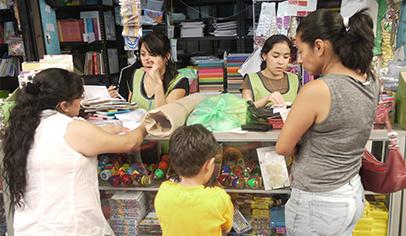9 School Store Setup Tips and Ideas

School stores can be a great way to serve students and earn money for your group, too. Here are some key points to consider when setting yours up.
School Supplies
Stock items students need—like notebooks, erasers, and pens and pencils—but with an added fun factor. Look for supplies with popular characters or trendy designs, or a pop culture theme (like emojis). Popular items include pencil grips, pencil sharpeners, multicolor pens and mechanical pencils, highlighters, bookmarks, keychains, and mini dry erase boards.
School Logo Items
Water bottles, bumper stickers, car magnets, drawstring bags, and other items bearing the school name can be strong sellers. If students or staff are required to wear IDs, consider lanyards with the school name.
Join the PTO Today community (it's free) for access to resources, giveaways and more
Toys
Many school stores stock toys like stress balls, fidget toys, slime, and snap bracelets, but it’s a good idea to check with school staff before selling toys to see if any of the items have been banned from school because they cause classroom distractions.
Snacks
If you sell snacks to students during or right before or after school, they must meet the USDA’s Smart Schools in School nutrition guidelines. For a list of compliant snacks, check the Alliance for a Healthier Generation Smart Food Planner. If you want to sell a food item that’s not on the list, you can use the Smart Snacks Product Calculator on the site to find out if it is compliant. The guidelines do not allow the sale of soft drinks, and sports drinks are only allowed at the high school level.
Display Prices
Display prices where students can see them. Be mindful that students’ sight line won’t be as high as that of the adults who are helping set up the store. It’s a good idea to post the price on the box containing each set of products. You may also want to display prices on a menu board or prepare a posterboard with photos of each item, to make it easier for kids still learning to read to find out what things cost.
Affordability
Price items reasonably and offer some low-cost items so students won’t be priced out. Many stores offer small items for less than $1.
Cash Collection
Whether you use a cash register or a simple cash box, you’ll need small bills and plenty of coins for making change. Set prices that are easier to make change for, like increments of 25 cents.
Track Sales
Ideally, you’d issue a receipt for each sale. If that’s not feasible because of the large number of small transactions, keep a tally of each day’s sales. Make sure the tallies match the cash you took in for each shift, and keep the records for future reference.
Inventory Tracking
Keep track of what items are sold so you know what needs to be restocked. Some groups create custom forms for this, while others simply jot down the information in a spiral notebook.






















